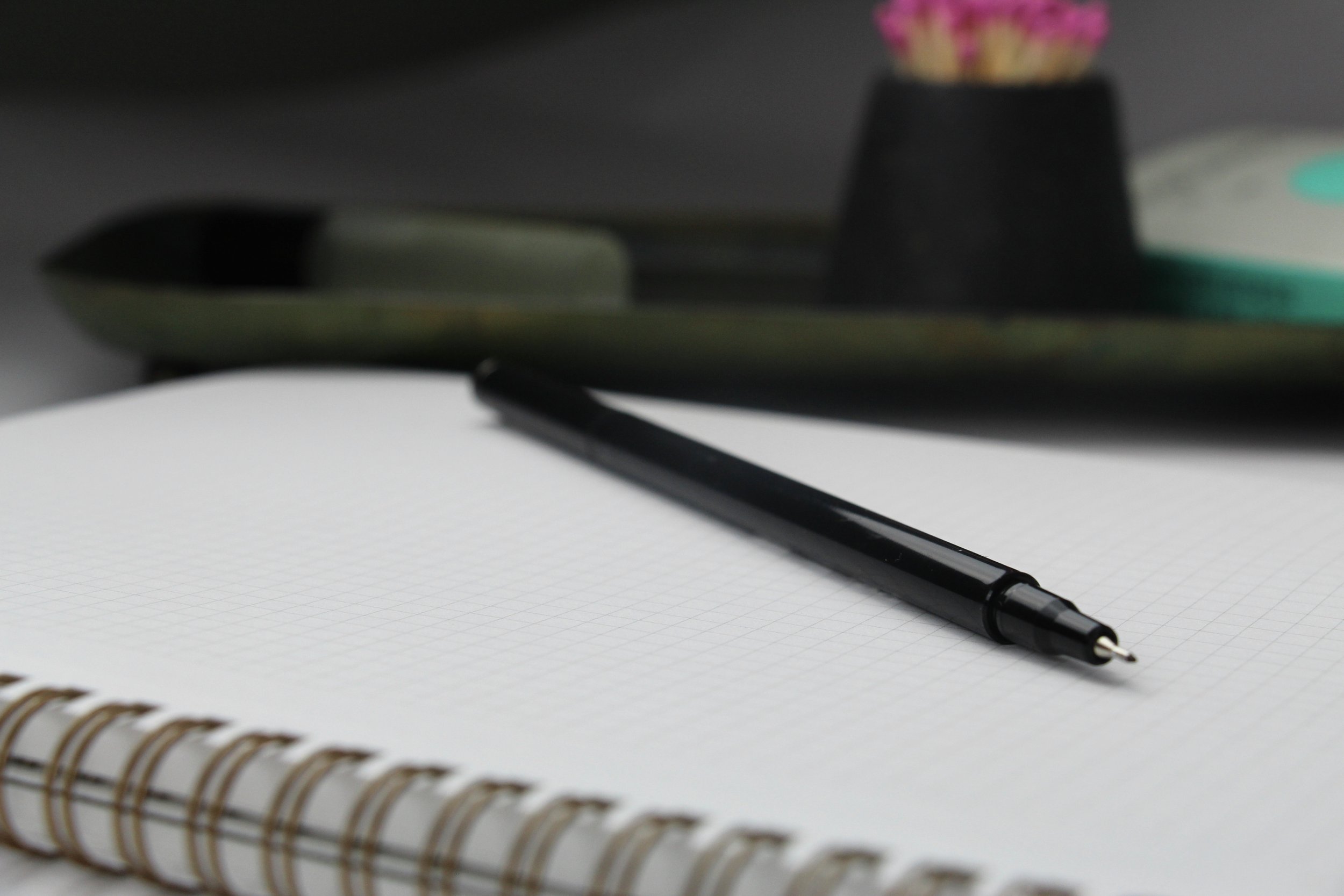On Journaling
jour·nal (/ˈjərnl/)
verb
gerund or present participle: journaling
to write in a journal or notebook.
It sounds easy, right? Then why aren’t we all journaling our minds out every day when we know it helps to calm anxiety, make decisions, examine thoughts and sort through our complicated emotions? Because there is a vast difference between something being simple and something being easy to do. Journaling is simple, but it isn’t an easy activity to break into. It takes practice, motivation and the right tools.
You’re reading this, so that means the motivation is there. In terms of tools, there are a few tricks that can help you begin to incorporate a journaling practice into your life. Everyone responds to different methods, so pick one that appeals to you or seek out an entirely different modality to get started.
GRATITUDE JOURNALING
You’ve probably heard about gratitude journaling and its proven effectiveness in boosting mental health. In a study done by researchers from the University of Minnesota and the University of Florida, findings proved that listing positive events at the end of your day -- and what made them positive -- lowers stress levels and imparts a feeling of calm at bedtime. To begin using this method, just spend a few moments in the evening and jot down what made you happy or content that day.
“ Journaling can be long-form writing, stream-of-consciousness, bullet points, doodles, or sketches. Pick the method that comes most naturally to you.”
SKETCHBOOK JOURNALING
Journaling doesn’t mean writing a groundbreaking memoir. Some people don’t connect with written words, and for them, sketching or doodling is a better path toward a long-term journal practice.
MORNING PAGES
Julia Cameron’s seminal guide, The Artist’s Way, includes a strict edict to begin writing morning pages. Essentially, she instructs you to produce three pages of long-hand writing each morning. Beyond the length and the time of day, there is no structure and the writing is intended to be stream-of-consciousness.
If three daily pages is intimidating, even dedicating a small amount of time -- five minutes is a great start -- to put pen to paper can help you to unwind the thoughts running through your head at all hours of the day.
On paper, it’s a simple exercise to write down thoughts, feelings and experiences. But there’s a vast divide between an activity being simple and having it feel easy to do. We offer journal prompts in each IDYLHOUR box because we know that it’s a foundational self-care practice and having a journal prompt to react to can help relieve the pressure of starting from scratch.
And, investing in a notebook you love -- that makes you look forward to writing in -- can help you develop the habit of journaling.
If you want the skinny on our favorite journals, head to our post over here.



